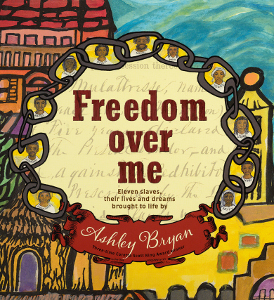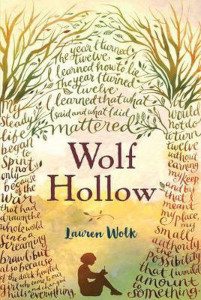< Newbery Medal and Honor Books
Given the Newbery Award's prestige it would be easy to assume that the award winners are all excellent books for children. The Biblioguides Team has not found this to be the case. We always want to provide parents with the information they need to make the best book decisions for their families. With that goal in mind, we've put together a complete list of all medal winners and honor books since inception, and the Biblioguides Review Team is working together to read our way through the winners and to provide a review. Where we have not yet reviewed a book, a description directly from the dust jacket or from the publisher has been provided. In some cases, we have shared a brief synopsis from The Newbery and Caldecott Awards: A Guide to the Medal and Honor Books (1999).
Reviews are the thoughts and opinions of the particular reviewer and do not necessarily represent all members of the team. Reviews will continue to be added as the team reads more of the Newbery books. We hope this list will help you familiarize yourself with the various winners and provide the necessary information to determine which books would be a good fit for your family!

The Girl Who Drank the Moon
By: Kelly Barnhill
Medal Winner
Reviewed by: Sherry Early
Recommended age: 12+
The Girl Who Drank the Moon may be much too witchy for some readers. It was a little too witchy for me. There’s a mostly good witch, and a bad witch, and a fellowship of Sisters who are really deluded and autocratic, or blind follower, witches, and a young girl who grows up to be a good witch under the tutelage of the first witch in this list. From all of that witchiness it may seem that the book is about witches, but it’s really about magic, and growing up, and child sacrifice, and adoptive families, and birth families, and extended families. In all of those “abouts” or themes, I thought the book was so good that I didn’t mind the witchiness too much, although I’d rather the word “magician” or something else were used.
The characters are Xan, the Witch in the Forest; and Glerk, the Swamp Monster; and Fyrian, the Perfectly Tiny Dragon; and Luna, the baby who is enmagicked by feeding on too much magical moonlight. The story tells of Luna’s childhood with her adoptive mother, Xan, deep in the forest, and of the harsh life of the villagers who live in the Protectorate on the edge of the forest. The villagers are governed by the dictatorial Council of Elders and by the Sisters of the Star, and they live lives of deprivation and poverty while the Elders and the Sisterhood benefit from the villagers’ fear of the forest witch and their sorrow over the many infants that have been sacrificed to appease the witch.
If readers are discerning enough to understand the witches and the child sacrifice in context as evils that must be righted, it's a beautifully written story.
Read full reviewFreedom Over Me
By: Ashley Bryan
Illustrated by: Ashley Bryan
Honor
Reviewed by: Deanna Knoll
Recommended age: Age 5+
Also read and recommended by: Christine Kallner, Sandy Hall, Tanya Arnold
Combining his gripping artistic style with his insightful writing, Ashley Bryan has created an unforgettable book. Using actual appraisal documents from a sale at a plantation, the author/illustrator has imagined each slave through watercolor sketches, fictional background details and inward thoughts and dreams, creating a 3-part imaginative, biographical portrait of each of eleven slaves. While historical fiction often produces stories about the slaves' lives, what is special about this book is Ashley Bryan's ability to tie each person's current life to their remembrances of their African villages and what they want for the future. Also, through the "dreams" section of each portrait, the author shares their infrequent opportunities for happiness and joy through pride in their work and creativity, both practical (woodworking, basketmaking) and artistic (music and drawings) making this a hopeful book.
While slavery is a difficult topic for conversation for anyone, this book allows for the conversation to start early, so young children can start to understand the ancestors of all of our countrymen. The book does not address the physical punishments or separations that occurred but still clearly speaks of their lack of freedom. I would wholeheartedly recommend this book to anyone who wants to begin to comprehend the pain, joys, desires, and fears that filled the hearts and minds of black Americans during this horrifying time of American history.
The Inquisitor's Tale: Or, the Three Magical Children and Their Holy Dog
By: Adam Gidwitz
Illustrated by: Hatem Aly
Honor
Reviewed by: Sara Masarik
Recommended age: 12+
Also read and recommended by: Christine Kallner, Deanna Knoll, Lara Lleverino, Tanya Arnold
The Inquisitor’s Tale by Adam Gidwitz is a blend of ridiculousness, beauty, intrigue, and deep questions. I wanted to love it for its creativity. But, after reading it for a while, I wanted to dismiss it for its crassness. I wrestled with this text throughout the entire reading process. When I turned the last page, I discovered thirteen pages of endnotes. Because the final chapters were lovely and inspired, I committed to reading the endpapers. It was there that I realized I had read this book all wrong.
Using a format like that of the Canterbury Tales, this novel follows the beautiful friendship and exploits of three children and the miraculous dog who accompanies them. Like the Canterbury Tales, each chapter is told in the voice of a different storyteller—“The Nun’s Tale,” “The Brewster’s Tale,” “The Jongleur’s Tale,” etc. Also like the Canterbury Tales, those voices are heavily accented, and tell the story through the prejudices of the particular storyteller. I struggled with this because I thought the concept was brilliant, but the execution was lacking. I loved how Gidwitz made each storyteller his own character with a unique voice, but I was saddened by the insertion of unnecessarily modern language commonly found in children’s literature today. I felt like he was dumbing down his writing to make it appealing to a younger audience than the text really should be addressed to.
Without context, this story feels very much like Monty Python. A farting dragon, “foul fiends” who are zombie-like brigands, knights crawling stupidly through a dung heap, dogs who come back from the dead, and a drunk monk. That kind of story does not appeal to me, and I nearly gave up, frustrated, in several places. But then, pockets of beautiful writing would break-in and my interest would be renewed. Had I known that the farting dragon was not a crude invention designed to make ten-year-old boys laugh themselves silly, but rather a true story, I may have been less offended by its inclusion. Gidwitz explains that the idea came from a book of saints’ lives from 1206 called The Golden Legend by Jacob de Voragine.
I think The Inquisitor’s Tale could be a wonderful resource for readers who are preparing to study The Canterbury Tales or the Middle Ages. I think Christians should be aware of the religious challenges in this text, and that they might want to use those problems as opportunities for discussion and better formation.
Read full reviewWolf Hollow
By: Lauren Wolk
Honor
Reviewed by: Deanna Knoll
Recommended age: 13+
Also read and recommended by: Lara Lleverino
This thought-provoking story is about a girl in 1940s Pennsylvania who, up to now, has lived a fairly simple life, but is forced to grow up fast and make difficult choices, leaving the innocence of childhood behind. The author weaves together themes of prejudice, the ethics of truth telling, justice, and the price of kindness, all through the lens of bullying. It haunted my thoughts long after I finished turning the pages. It’s one of those books that draws you in so deep you can’t escape until the final words are read.
I’ve enjoyed other coming-of-age stories, but this one hit me hard. As it deals primarily with the long lasting physical, mental and emotional effects of bullying, it hurt my heart like nothing else, and yet, stories are one of the best ways to tell those difficult truths.
I wholeheartedly recommend this book, but be prepared to weep.







